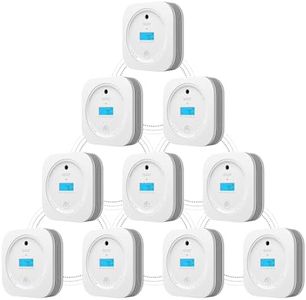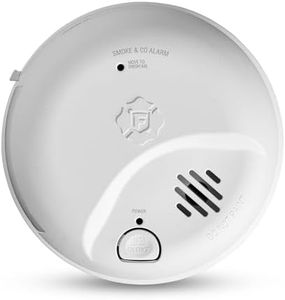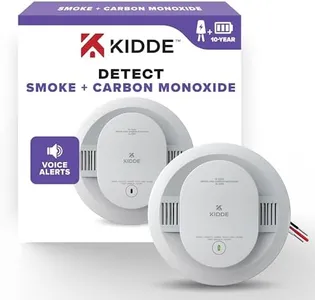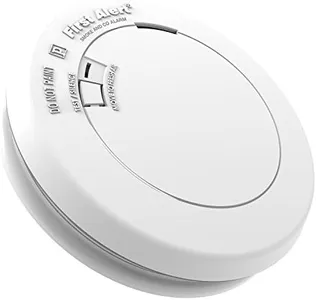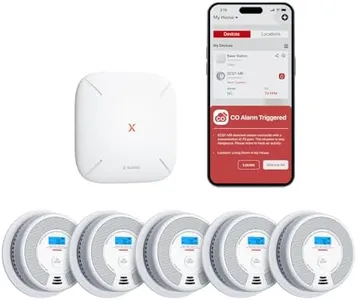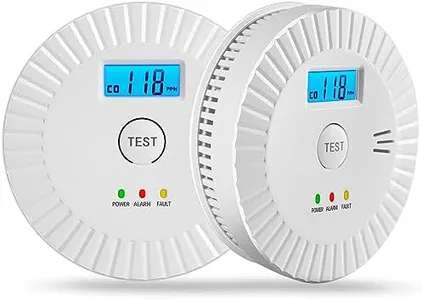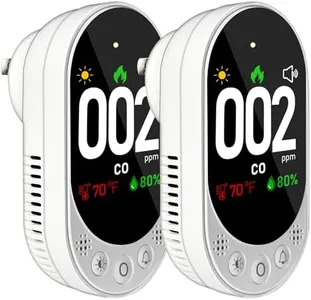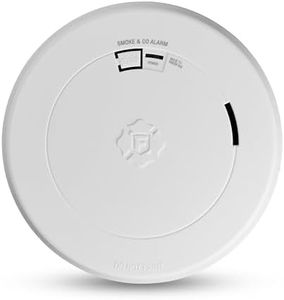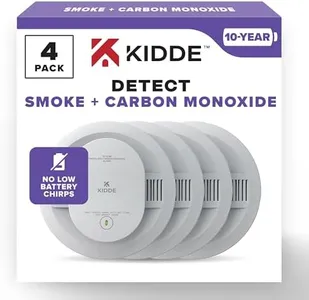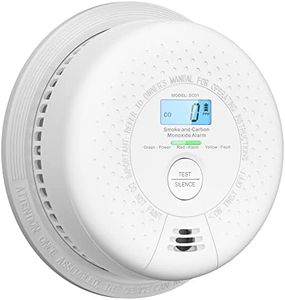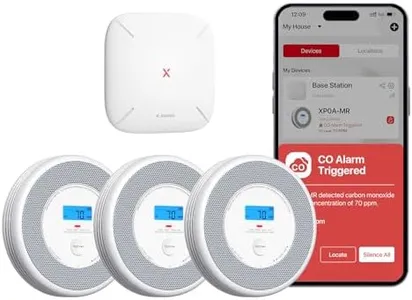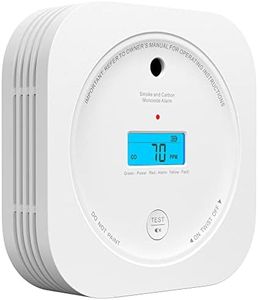Buying Guide for the Best Smoke And Carbon Monoxide Detectors
Choosing the right smoke and carbon monoxide detector is crucial for your home's safety. These devices are designed to alert you early to fire or dangerous CO gas, giving you precious time to act. Before you make a decision, consider the size and layout of your home, local codes, the type of potential hazards, and who will be using the detector. Understanding the main specifications will help you pick a model that fits your needs without over- or under-protecting your space.Sensor TypeSensor type refers to the technology the detector uses to sense smoke or carbon monoxide. Smoke detectors generally come in two types: ionization sensors (better at detecting fast-flaming fires) and photoelectric sensors (better at catching slow, smoldering fires). For carbon monoxide, electrochemical sensors are the most common type. Some models combine more than one sensor for broader protection. When choosing, think about the likely risks in your home. For balanced protection, consider dual-sensor models. Homes with risks for both fast and slow-burning fires benefit from combination detectors. If your concern is mostly carbon monoxide, focus on detectors with a dedicated CO sensor.
Power SourceThe power source determines how your detector stays active. Some run on replaceable batteries, some have sealed long-life batteries (often lasting 10 years), while others are hardwired into your home’s electrical system, sometimes with a backup battery. Battery-powered detectors are easy to install and can be put anywhere, while hardwired ones are reliable but may require professional installation. Sealed battery models reduce the need for frequent battery changes. If you value convenience and minimal maintenance, consider sealed batteries. For added reliability, especially in larger homes, a hardwired system with backups is often a good fit.
Alarm Type and LoudnessThis refers to how the detector warns you—usually through a loud sound, with many also offering voice alerts or visual flashes for those with hearing difficulties. Loudness is measured in decibels (dB), and most alarms are rated at 85-100 dB to ensure they wake or alert people in the area. If you have family members with hearing impairments or children, models with voice, strobe lights, or connectivity to smart devices add an extra layer of safety. For general purposes, ensure the alarm is loud enough to be heard throughout your sleeping areas.
InterconnectivityInterconnectivity means multiple detectors can communicate with each other. If one goes off, all the interconnected units sound an alarm. This is especially useful in larger homes or multi-story residences. Some detectors use wires for this, while others connect wirelessly. For those living in large houses or if you want to be sure everyone hears an alarm regardless of the fire location, look for models that can link together.
Test and Silence FeaturesDetectors come with buttons to test the alarm and to silence nuisance alarms (like those caused by cooking). The test feature lets you check the system regularly to confirm it’s working, while a silence button temporarily mutes false alarms. If your kitchen or bathroom is near a detector, look for models with reliable and easy-to-reach silence features. Regular testing ensures your detector is always ready when needed.
Lifespan and End-of-Life AlertsAll detectors have a limited lifespan—commonly 7 to 10 years—after which they may not work reliably. Many devices now include end-of-life alerts, usually a chirping sound or a light, to remind you it's time to replace the unit. Consider how often you want to replace a detector and whether you’ll spot or hear the alerts easily. Sealed models with built-in end-of-life notifications are especially good for those who prefer set-and-forget safety.
Smart Features and ConnectivitySome newer detectors can connect to smartphones via Wi-Fi or Bluetooth, sending alerts and letting you monitor status remotely. These smart features can include integration with home automation systems, self-testing, and automatic notifications. If you travel frequently, have a smart home setup, or want to be alerted even when you're away, smart-enabled detectors can be a good choice. Those who prefer simplicity may opt for traditional, non-connected models.

